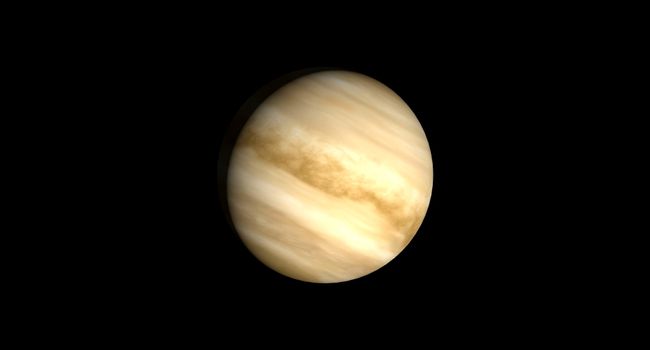Scientists Uncover Unexpected Evidence of Venus’ Past in Its Atmosphere
The secret lies in the ratio of two specific elements.
Researchers have found something that was least expected in the environment of Venus which is the increase in the concentration of deuterium relative to hydrogen. This may not sound very exciting at the first glance, but if true, this discovery can bring a revolution to all that is thought is known about Venus.
This discovery is particularly of interest as it undermines the prior common paradigm of Venus being an uninhabitable and desolate world. Here’s why.
”Since Venus is almost the same size as the Earth, Venus is called the Earth’s twin,” Hiroki Karyu, a researcher at Tohoku University and one of the authors, added in the statement. ‘Anyway, despite such similarities, Venus has been623 evolved quite differently Indeed, while the Earth has rather moderate surface conditions,’
The earth like conditions on this planet are characterized by high temperature and pressure far from the sun and beneath the thick cloud cover and therefore greatly reduce the ability of this planet to contain liquid water. The scientists mentioned that in an aim to give out a perspective, ‘these altitudes have a water content that is 150,000 times less than similar heights on Earth.
Nevertheless, it wasn’t always like this.
Hydrogen and deuterium are two isotopes, the only difference being the different number of neutrons in nuclear of hydrogen molecule. Due to this difference in atomic mass scientists are able to study isotopic ratios in much the same way that the age of organic material is determined using a ratio of Carbon-12 and Carbon-14 in dating.
Currently, the ratio of HDO/H2O is believed to have been identical for Venus and Earth since both planets formed in the hot zone of the early solar system where water could not condense. This performed the proposed non-equilibrium AD rate and provided water with similar D/H ratios for both planets coming from water-rich asteroids of the outer asteroid belt. In support of this, we find that levels of other volatile elements such as carbon and nitrogen are also similar on Venus and Earth.
Yet, the information obtained by the Solar Occultation in the Infrared (SOIR) aboard the Venus Express unmanned orbiter launched in 2006 and ceased its operation in 2014 contradicts it. Researchers discovered that in present venture atmosphere quantity of HDO relative to H2O is 120 times bigger than earlier time. In their presentation, the ESA scientists described this enrichment as follows; “This enrichment is mainly for the reasons of solar radiation that causes the water isotopologues to disaggregate in the upper atmosphere to form H and D atoms. ” “This is because the lighter H atoms can easily float away into space thus raising the ratio of HDO/H2O over time. ”
Scientists also have discovered that the volume density of water molecules, both in H2O and HDO, rises with height at between 70 to 110 kilometres (43 to 68 miles) above the Venus’s surface. Also, the HDO/H2O ratio starts to drastically increase at such altitudes and is about 1,500 times higher than that observed in the Earth’s oceans. This implies that water in Venus’ atmosphere is richer in deuterium than water in the Earth’s atmosphere, meaning there are inequality in atmospheric of the two planets.
The research team supposes that these processes could be associated with climate mechanisms connected with sulfuric acid (H2SO4) aerosols – the main constituent of Venus’ clouds.
“These aerosols are produced at the clouds top since the temperature is lower than that of the sulfurated water dew point hence the formation of deuterium-enriched aerosols the scientists said. ”These particles go to a higher altitude where temperatures are higher and so the particles evaporate and in the process, emit more of HDO than H2O and the vapor descends to re begin the process. “
Thus, the further generalization of these findings might redefine the perimeters of our knowledge about Venus. The team recognizes in future research that when looking at totals of the deuterium and hydrogen gases in the atmosphere of Venus, that the deuterium-to-hydrogen ratio at different altitudes should be considered. Also the variation of D/H with altitude controls the rate at which hydrogen and deuterium are lost to space. For instance, at higher altitudes of the oceans, the emission is much more in the form of deuterium than required and if some of this deuterium slips away, the D/H ratio is bound to change.
If researchers are to better estimate how the planet’s atmosphere has evolved and how much water, if any, has been lost over time then models will need to reflect these variations in altitude.
Do not forget to share your opinion with us to provide you with the best posts !




0 Comments